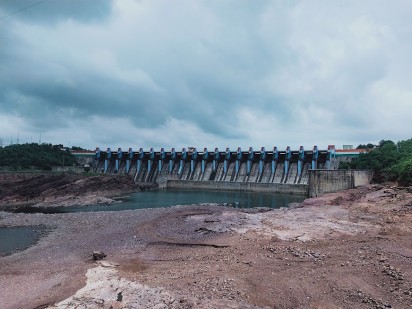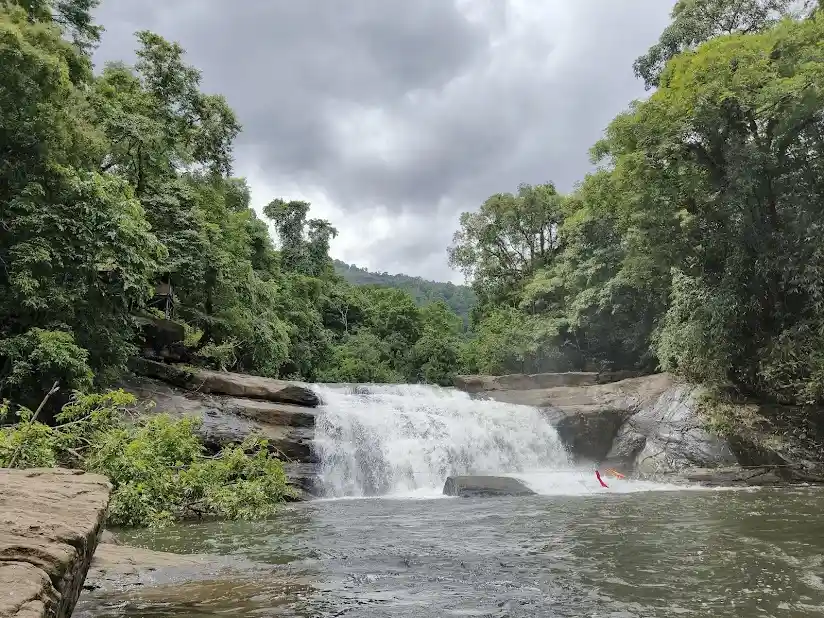The Indirasagar Dam stands as a monumental testament to human engineering ingenuity, offering a multifaceted solution to water resource management and energy generation in the Indian state of Madhya Pradesh. Situated on the Narmada River at Narmadanagar, Mundi in the Khandwa district, this multipurpose project epitomizes India’s commitment to sustainable development and responsible harnessing of natural resources.

Indirasagar Dam Project Inception and Legacy
The foundation stone of the Indirasagar Dam was laid by the late Smt Indira Gandhi, former Prime Minister of India, on 23 October 1984. This event marked the beginning of a transformative journey aimed at utilizing the vast potential of the Narmada River. The dam’s name pays tribute to her vision and dedication. The project’s significance extends beyond engineering achievements; it symbolizes a vision for the region’s growth and prosperity.
Construction and Downstream Projects
The construction of the main dam began in 1992, culminating in a colossal concrete gravity structure that stands as a beacon of human engineering prowess. The Indirasagar Dam is part of a larger network of projects, including Omkareshwar, Maheshwar, and the Sardar Sarovar Project. These interconnected projects harness the Narmada’s resources to meet the diverse needs of the region.
Technical Specifications and Features
The Indirasagar Dam‘s key features are a testament to its ambition and scope:
- Dam Type: Concrete Gravity Dam
- Height: 92 meters
- Length: 653 meters
- Irrigated Area: 1,230 square kilometers
- Annual Power Production: 2.7 billion units
- Installed Capacity: 1,000 MW (8×125 MW)
- Reservoir Capacity: 12,200,000,000 cubic meters (9,890,701 acre-feet)
In terms of reservoir capacity, the Indirasagar Dam stands as the largest in India, with a storage capacity of 12.22 billion cubic meters. This vast reservoir is a testament to the dam’s role in mitigating water scarcity and contributing to regional water security.
Irrigation and Power Generation
The Indirasagar Dam‘s impact is multi-faceted. The project’s irrigation component covers an expansive 1,230 square kilometers, benefiting the districts of Khandwa and Khargone in Madhya Pradesh. By providing water during both wet and dry seasons, the dam significantly enhances agricultural productivity and rural livelihoods.
Additionally, the dam’s hydroelectric power generation capacity is a remarkable achievement. With an installed capacity of 1,000 MW through eight units of 125 MW each, the dam contributes substantially to the regional power grid, fostering industrial growth and providing clean and renewable energy to a growing population.
Collaboration and Commissioning
The Indirasagar Dam stands as a successful joint venture between the Madhya Pradesh Irrigation Department and the National Hydroelectric Power Corporation (NHPC). Commissioned in May 2005, the dam’s completion represents the successful collaboration of governmental and private entities in realizing a shared vision of progress, sustainability, and development.
Environmental Stewardship and Progress
As with any transformative project, the Indirasagar Dam‘s construction has not been without challenges. The dam’s environmental and social impacts have prompted a need for responsible management, rehabilitation, and ongoing environmental assessments. The dam’s legacy serves as a reminder that the pursuit of progress must be accompanied by a commitment to preserving the region’s ecological balance.

Multipurpose Contributions
Irrigation
A primary objective of the Indirasagar Dam is to enhance agricultural productivity through effective water management. The reservoir, created by the dam, plays a pivotal role in irrigating the fertile lands of Madhya Pradesh. By storing water during the monsoon season and releasing it during dry periods, the dam facilitates year-round cultivation, bolstering food security and rural livelihoods.
Hydroelectric Power Generation
Indirasagar Dam‘s impact extends beyond agriculture. The flowing water is utilized to generate clean and renewable energy through hydroelectric power generation. Turbines within the dam harness the kinetic energy of the water, converting it into electricity. This sustainable energy source contributes to the regional power grid, fostering industrial growth and economic development.
Drinking Water Supply
Addressing the crucial need for clean drinking water, the Indirasagar Dam acts as a reservoir of potable water. It provides safe drinking water to numerous households, significantly improving water accessibility in the region. This achievement has a profound impact on public health and quality of life.
Environmental Considerations
While the Indirasagar Dam‘s contributions are commendable, its construction was not without environmental and social consequences. The creation of the reservoir led to the displacement of local communities, necessitating rehabilitation and resettlement efforts. Additionally, the altered flow patterns of the river have affected local ecosystems. Ongoing environmental assessments and mitigation strategies are imperative to ensure the dam’s long-term sustainability.
Legacy and Significance
The Indirasagar Dam stands as an embodiment of India’s pursuit of progress while upholding principles of sustainability. Its multifaceted contributions to agriculture, energy, and water supply have transformed the region’s landscape and livelihoods. The dam’s legacy emphasizes the importance of responsible water management, equitable distribution of resources, and ongoing maintenance to ensure sustained benefits for present and future generations




